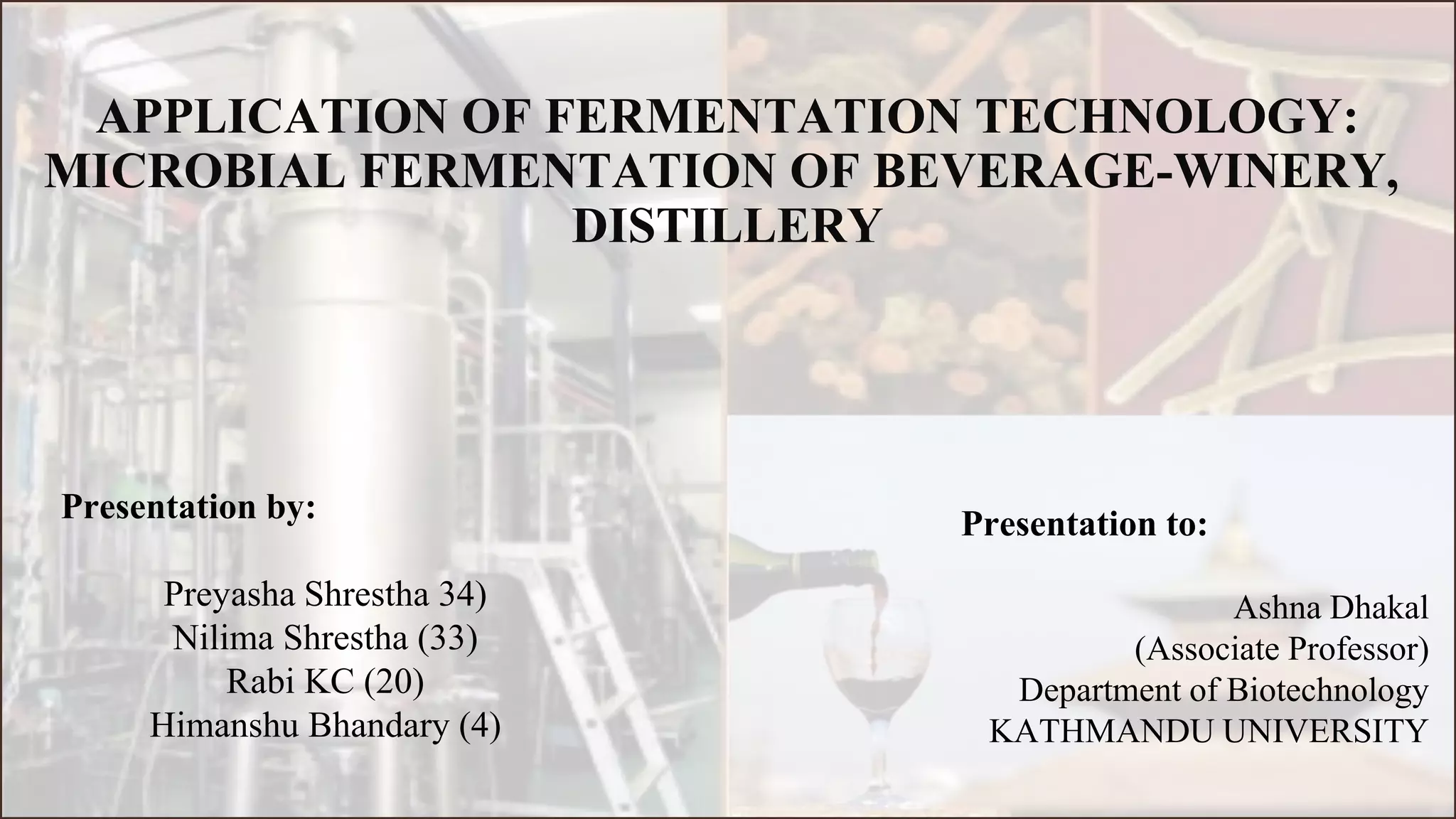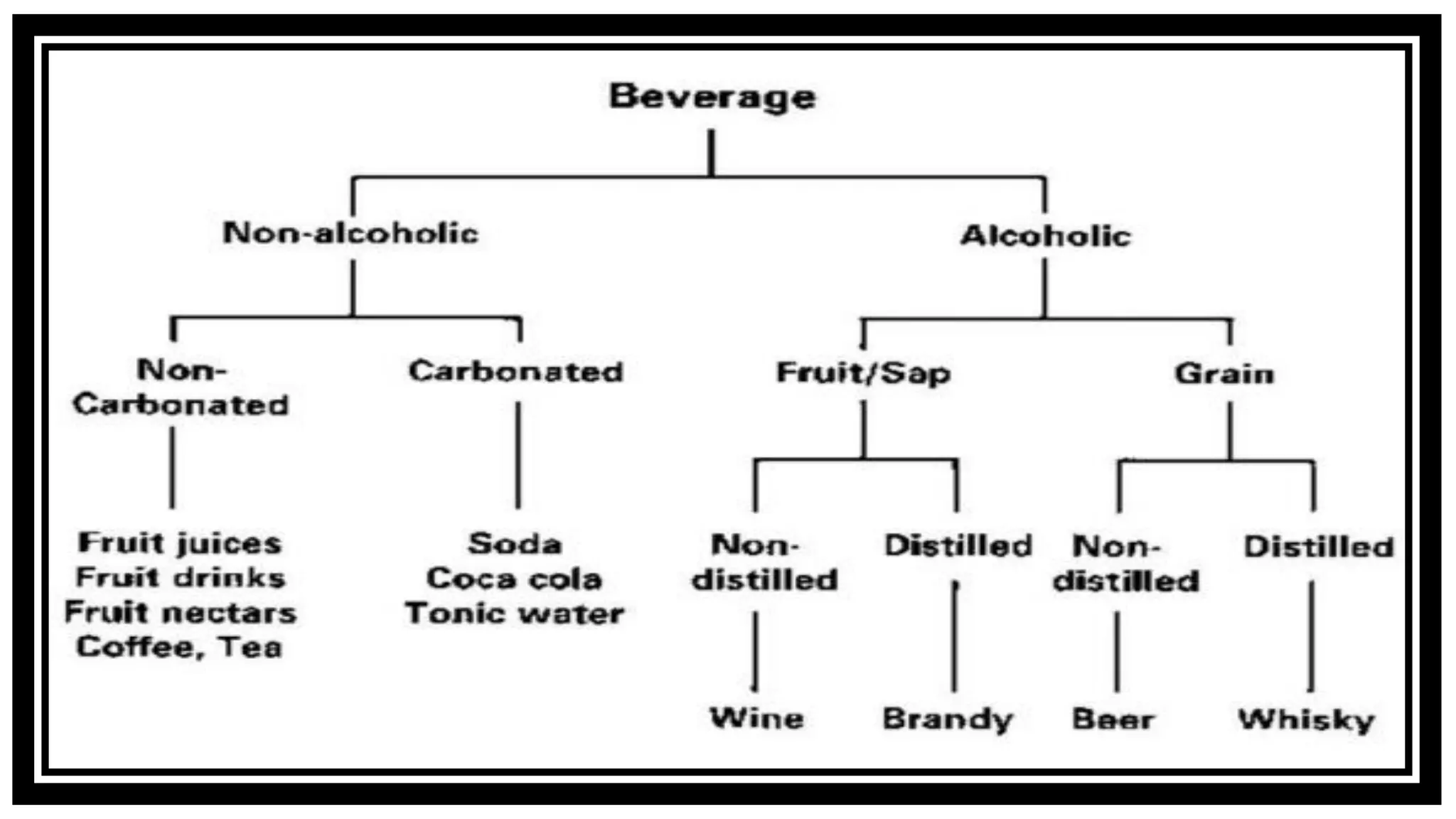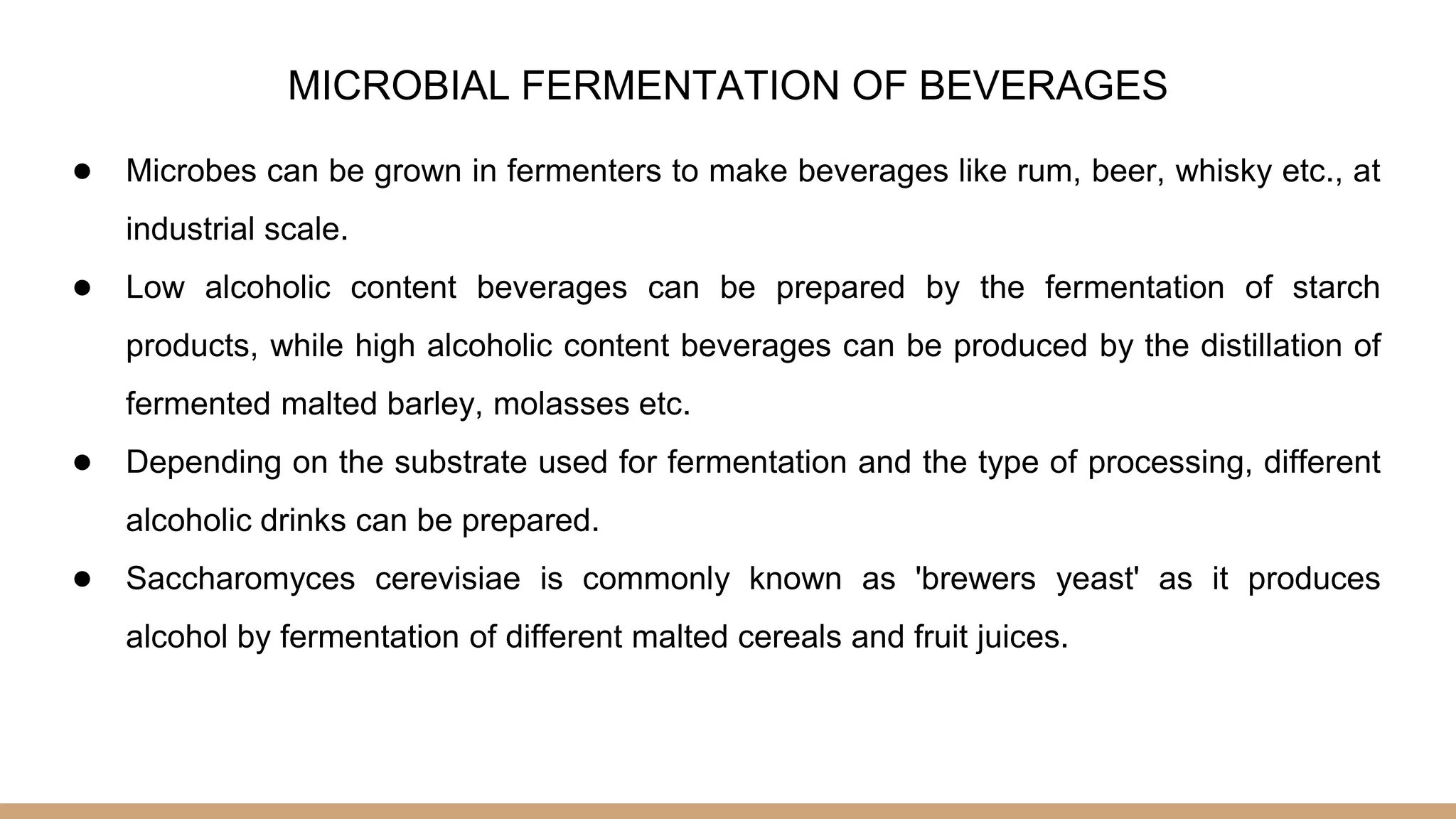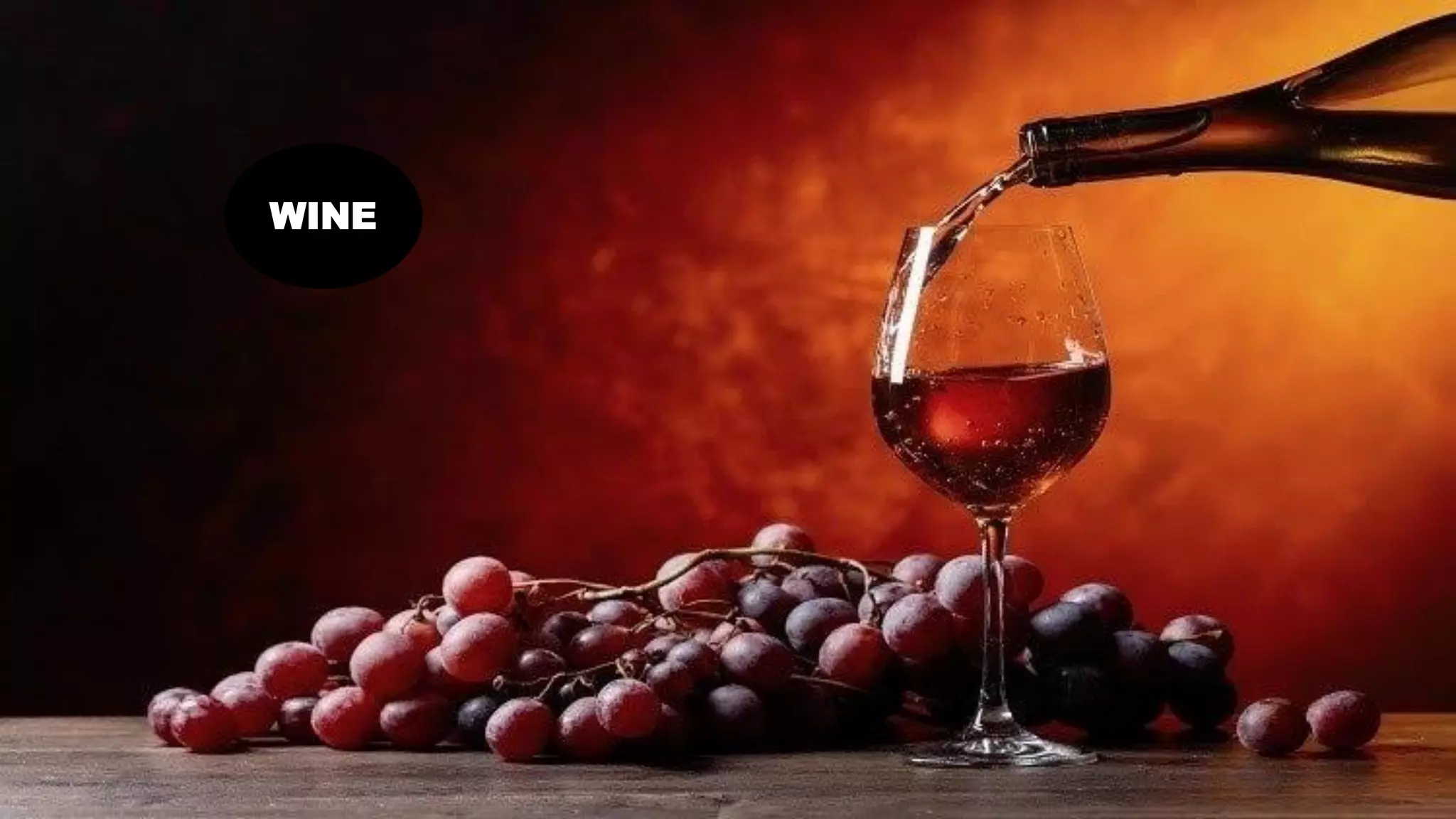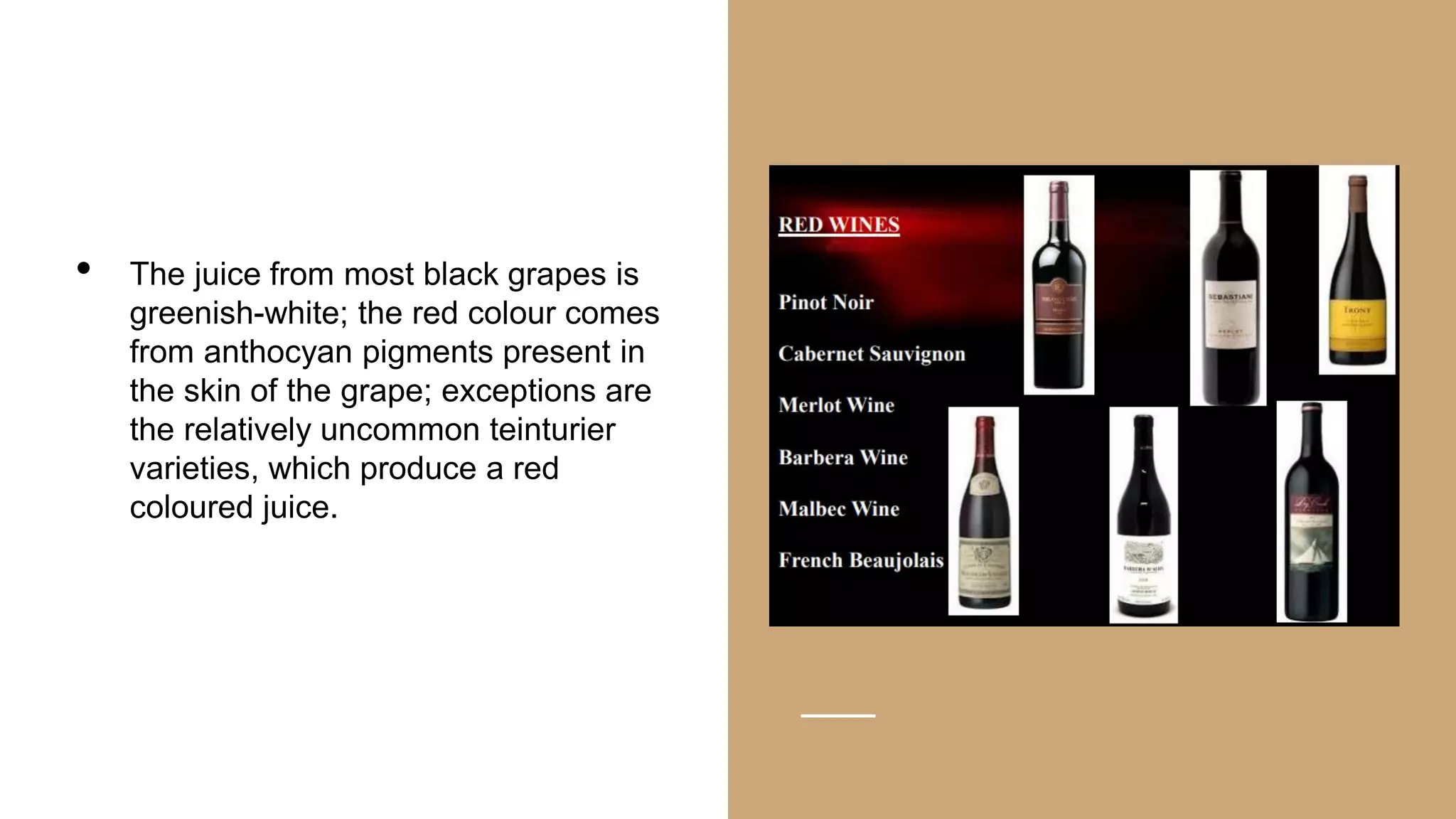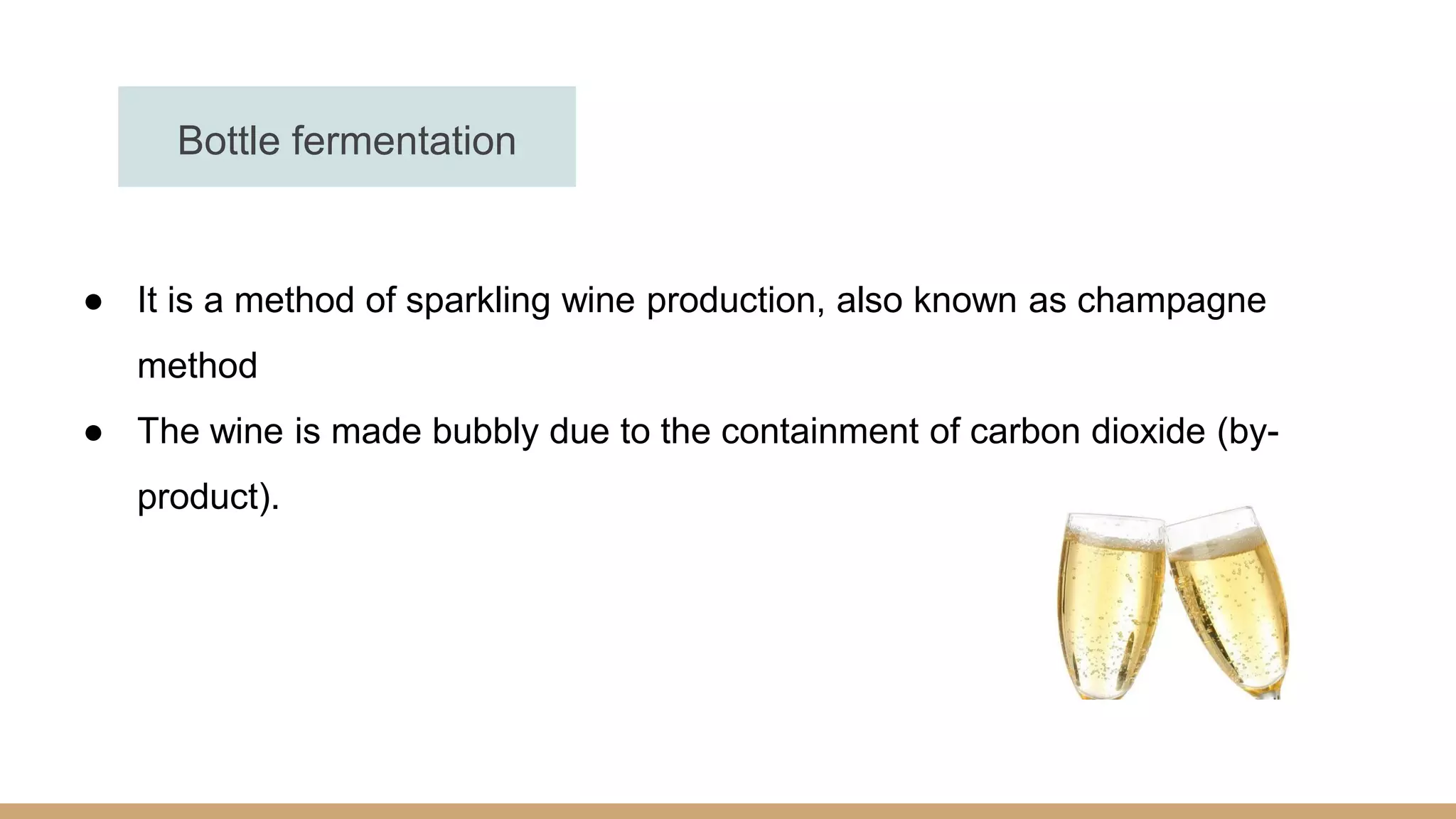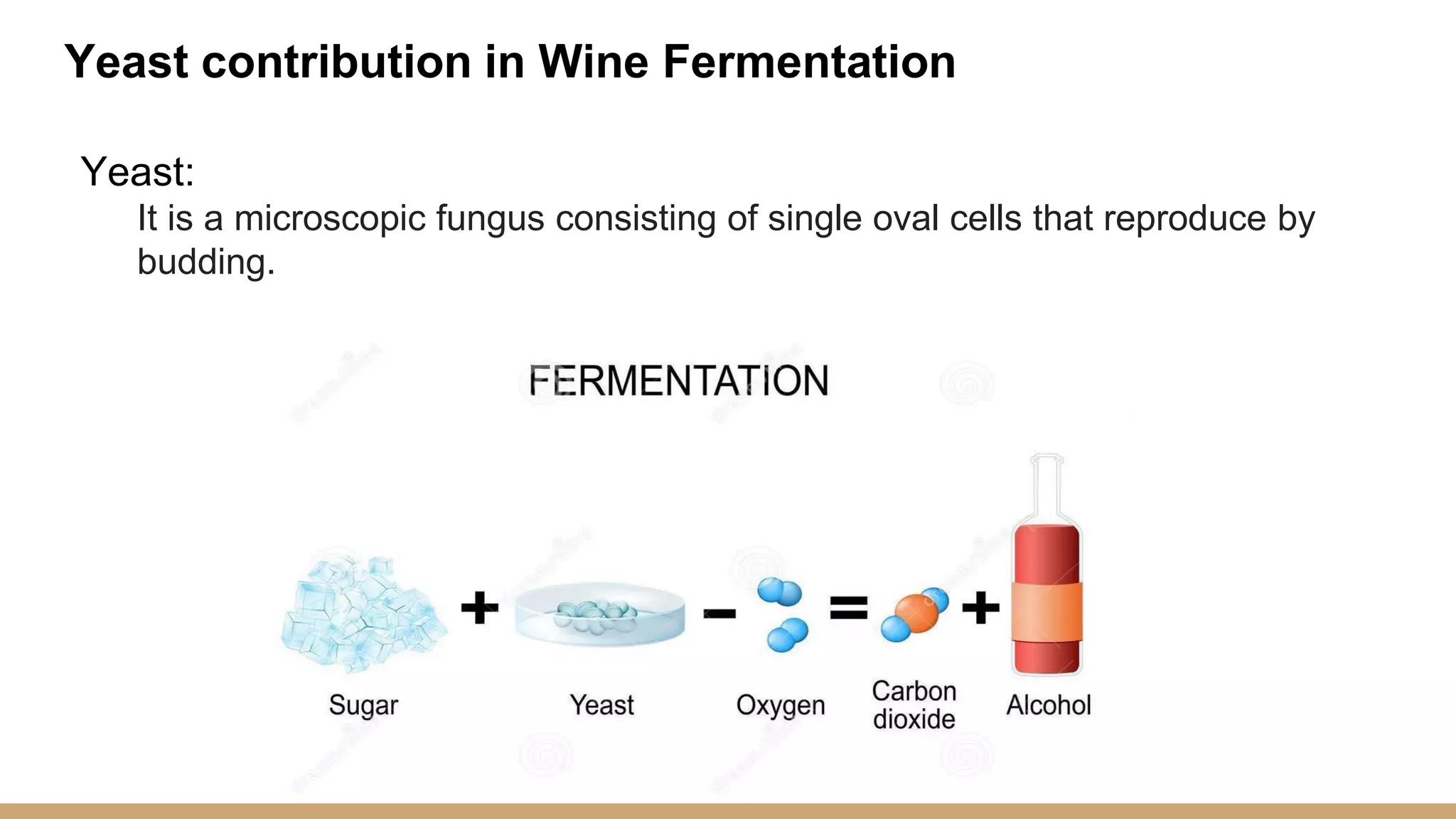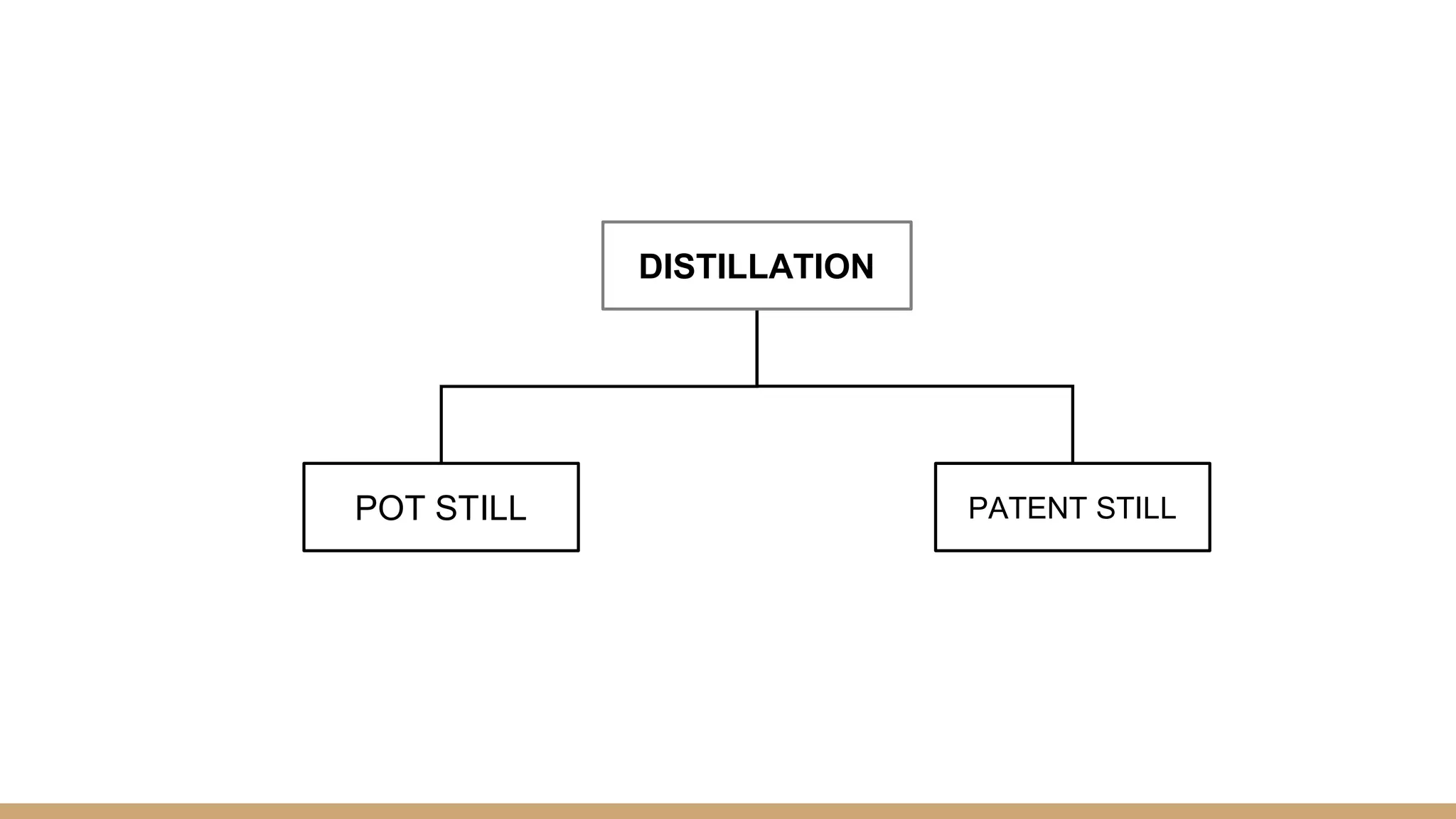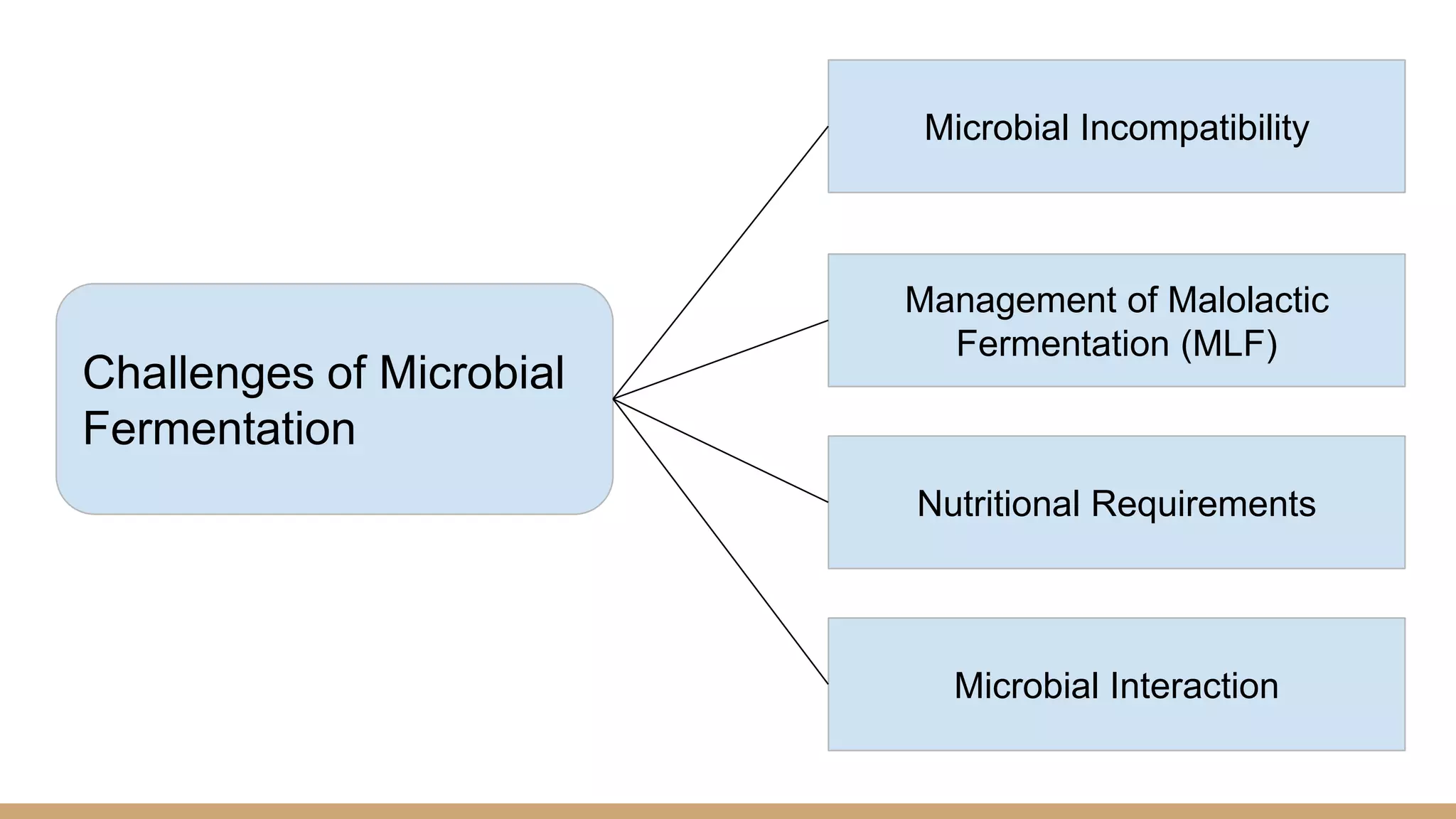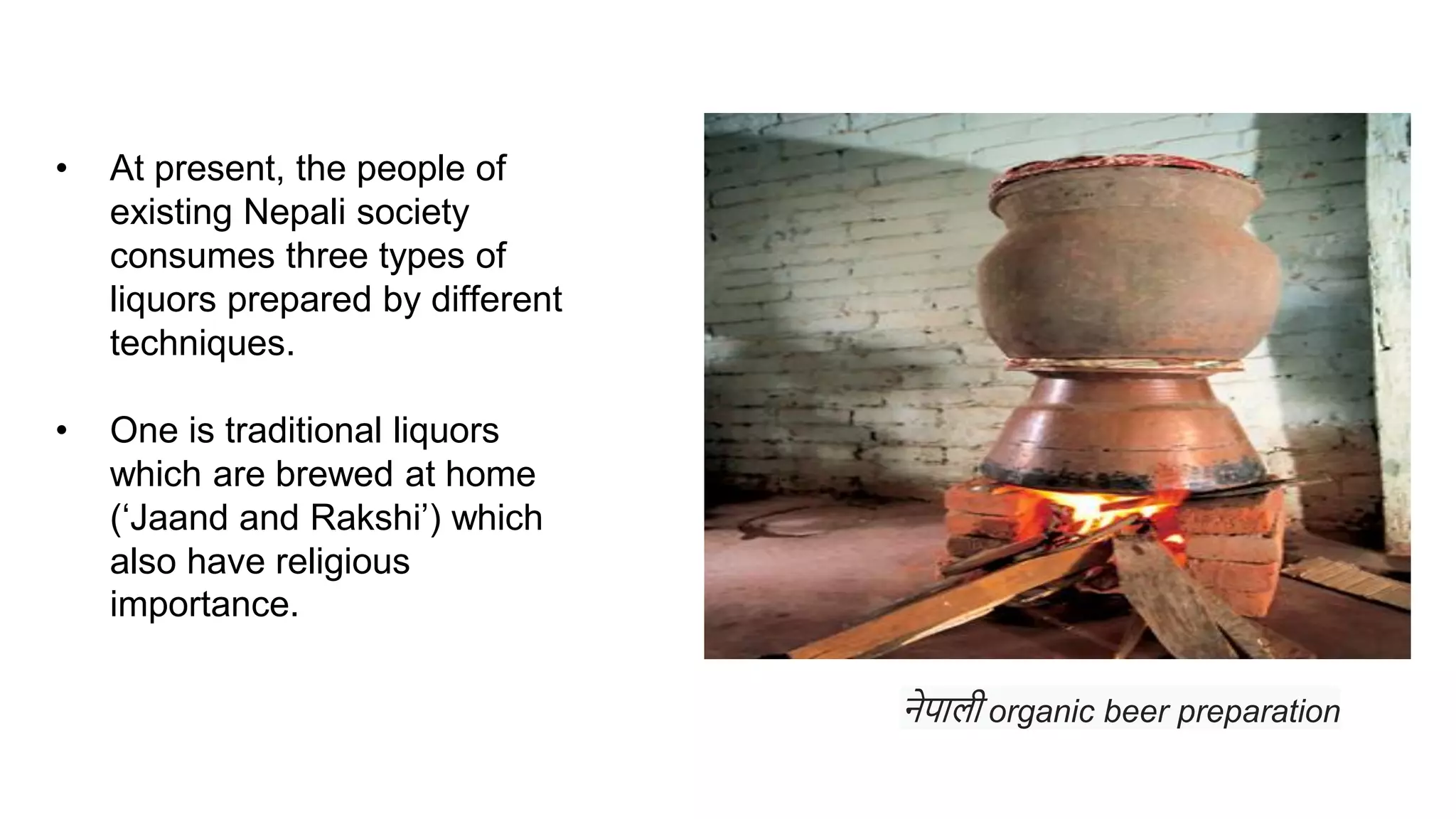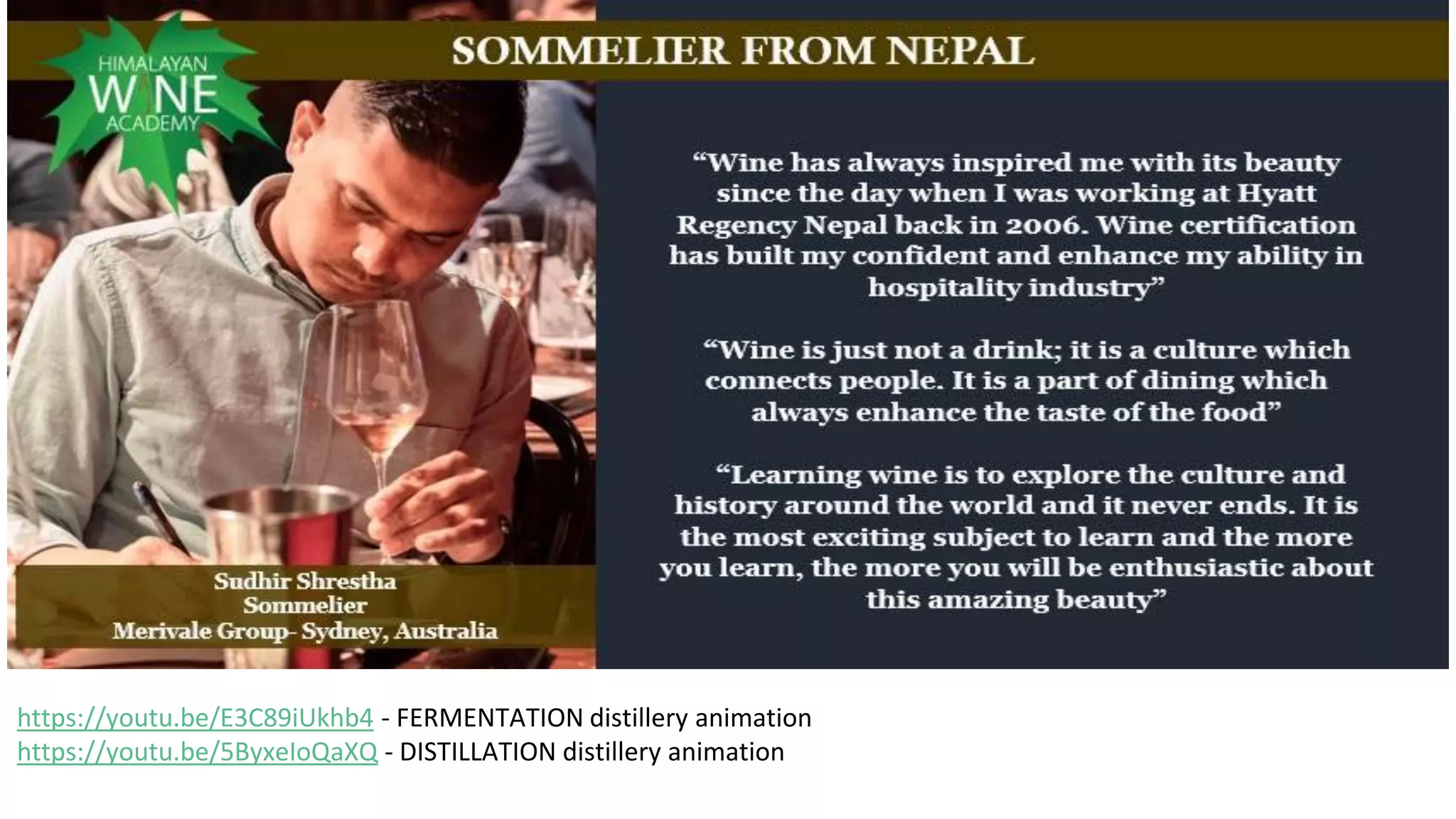This document provides an overview of microbial fermentation processes used in the beverage industry, specifically for wineries and distilleries. It discusses the types of fermentation (e.g. ethanol, lactic acid), microbes involved (e.g. Saccharomyces cerevisiae, lactic acid bacteria), and how fermentation is used to produce different alcoholic beverages like wine, beer, rum and whisky. It also summarizes the key steps in the winemaking process, including fermentation, aging, and the factors that influence fermentation. Current applications and challenges of fermentation technology in Nepal are also reviewed.
